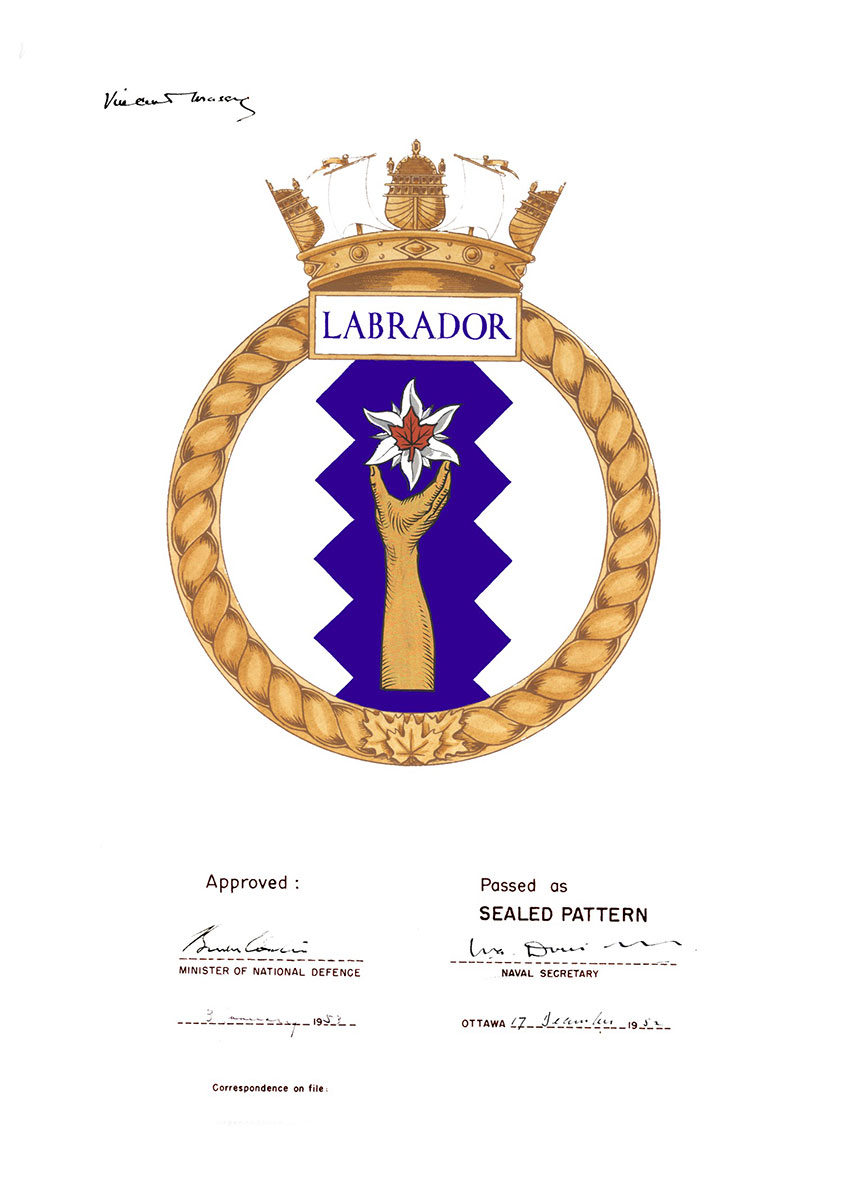HMCS Labrador
There has been only one vessel named Labrador in the Royal Canadian Navy.
HMCS Labrador (50)
The Arctic Patrol Vessel HMCS Labrador was built in recognition of the growing strategic importance of the sovereignty of Canada’s Arctic region. The design was adapted from that of the United States Coast Guard’s Wind class icebreakers. Like them, she was built for power rather than speed, her 6 diesel-electric engines driving her at 16 knots maximum. Heeling tanks connected by reversible-propeller type pumps enabled water ballast to be hurled from side to side at 40,000 gallons (181,844 litres) per minute, so that she could rock herself free when trapped by ice. She carried 2 helicopters.
Commissioned on 8 July 1954, Labrador sailed that summer on the first of 4 voyages she would make to the Arctic as a naval vessel. On that initial voyage, she became the first warship to negotiate the Northwest Passage across the top of the continent and, returning to Halifax, Nova Scotia, via the Panama Canal, was also the first to circumnavigate North America.
On her second voyage, in 1955, she transported personnel and equipment for the construction of the eastern portion of the Distant Early Warning (DEW) Line. That summer and the next, she carried out extensive hydrographic surveys in the eastern Arctic, spending 5 and one-half months there in 1956 alone. A departure from custom in 1957 found her paying visits to Portsmouth (United Kingdom), Oslo (Norway) and Copenhagen (Denmark), and on November 22, 1957, she was paid off for refit.
However, before she could fly the White Ensign again, it was decided to transfer her to the Department of Transport. As Canadian Coast Guard Ship Labrador, she was used for icebreaking in the lower St. Lawrence and, on occasion, embarked scientists for summer studies in the Arctic. Labrador was withdrawn from service on May 28, 1987, and later towed to Taiwan and broken up.
- Builder: Marine Industries Ltd., Sorel, Quebec.
- Displacement: 6,490 tons
- Date commissioned: July 8, 1954
- Date paid off: November 22, 1957
- Dimensions: 82 m x 19.2 m x 9.3 m
- Speed: 12 knots
- Crew: 228
- Armament: two 40-mm guns (2 single mountsI).

